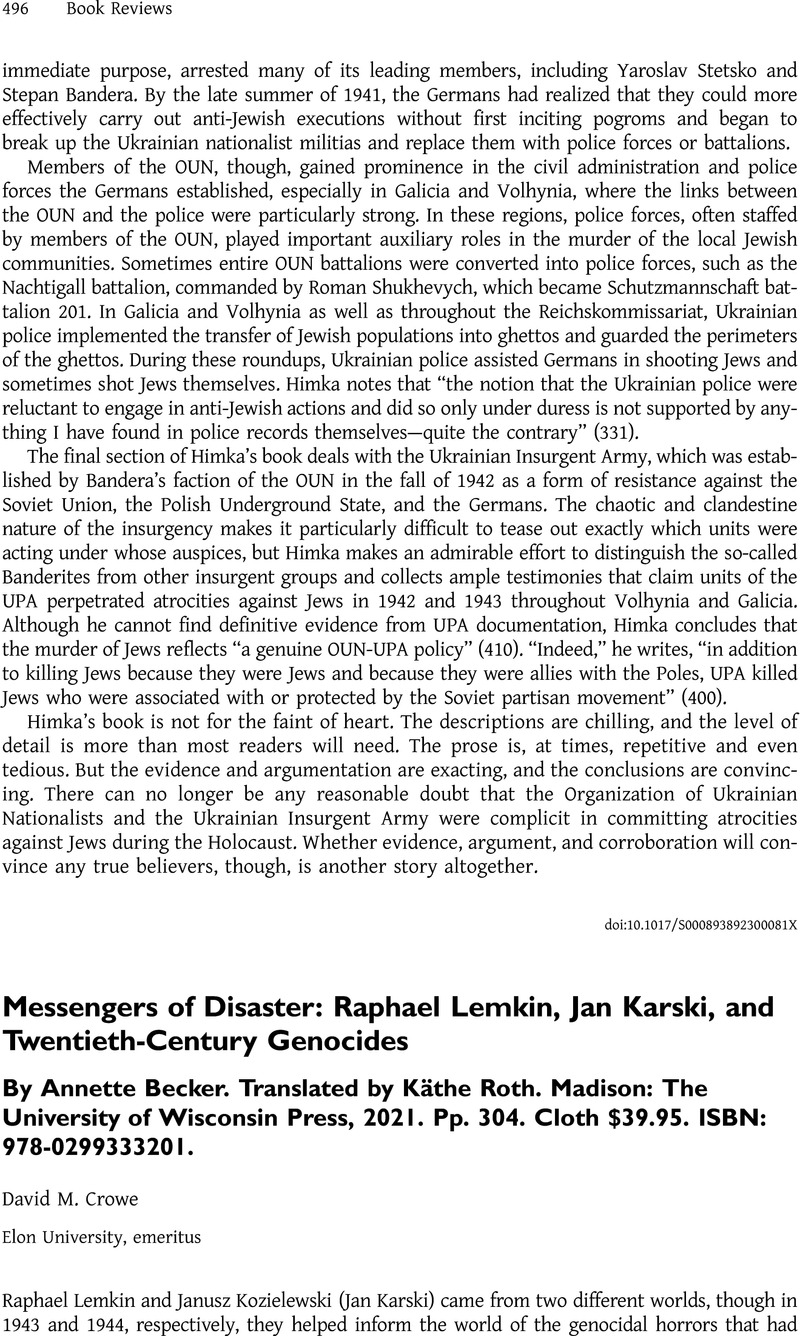No CrossRef data available.
Article contents
Messengers of Disaster: Raphael Lemkin, Jan Karski, and Twentieth-Century Genocides By Annette Becker. Translated by Käthe Roth. Madison: The University of Wisconsin Press, 2021. Pp. 304. Cloth $39.95. ISBN: 978-0299333201.
Review products
Messengers of Disaster: Raphael Lemkin, Jan Karski, and Twentieth-Century Genocides By Annette Becker. Translated by Käthe Roth. Madison: The University of Wisconsin Press, 2021. Pp. 304. Cloth $39.95. ISBN: 978-0299333201.
Published online by Cambridge University Press: 08 November 2023
Abstract
An abstract is not available for this content so a preview has been provided. Please use the Get access link above for information on how to access this content.

- Type
- Book Review
- Information
- Copyright
- Copyright © The Author(s), 2023. Published by Cambridge University Press on behalf of Central European History Society of the American Historical Association


